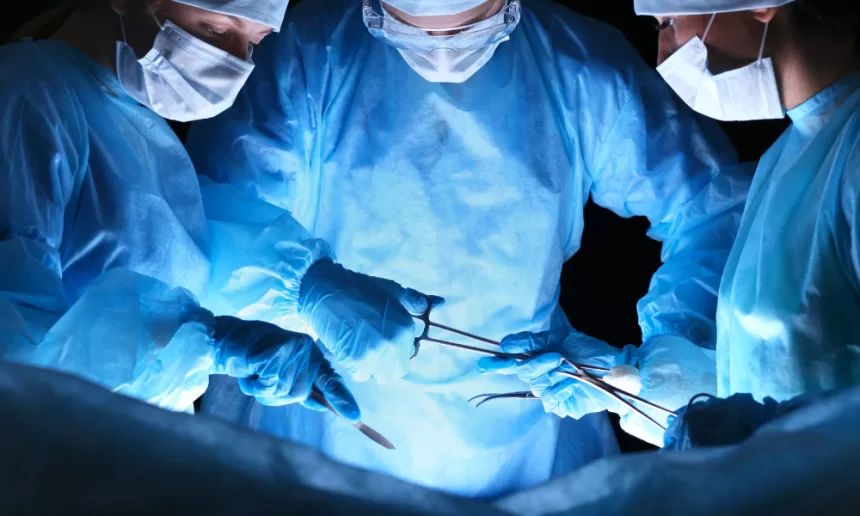Introduction
Fistula surgery provides an indispensable medical treatment for abnormal structures or pathways between two organs or vessels that are not at all typically connected. Used to treat problems including anal fistulas or for dialysis, these interventions target restoring normal function and enhancing the quality of life of the patient. In this guide, we will cover all aspects of Fistulectomy such as the indication, procedure, advantages, and recovery period.
What is Fistula Surgery?
Surgeons define fistula surgery as the surgical closure or ablation of the anal fistula treatment. In certain scenarios, e.g., arteriovenous (AV) fistulas for hemodialysis, providers intentionally construct a fistula to allow access to the circulatory system. In some situations, e.g., anal fistula, the surgery is to create a closure in the abnormal link to prevent infection and other complications.
Why is Fistulotomy Needed?
Fistula surgery is performed for various reasons, including:
- Treatment of Anal Fistulas: To address persistent infection, pain, and discharge caused by abnormal connections near the anus.
- Dialysis Access: In patients with renal failure, the formation of an AV fistula is a guarantee of adequate blood circulation for dialysis therapy.
- Prevention of Complications: Uncontrolled fistulas can result in a chronic infection, abscess, and severe pain.
Types of Fistula Surgery
The species and type of fistula surgical treatment are determined by the problem being treated. Common types include:
Anal Fistula Surgery:
- Fistulotomy: Involves cutting open the fistula to allow it to heal naturally.
- Seton Placement: A surgical thread is employed to maintain the fistula patent and drain infections with time.
- Advancement Flap Procedure: Tissue from adjacent sites is applied to seal the fistula.
Arteriovenous (AV) Fistulotomy:
- Previously used to form an anastomosis between an artery and vein for dialysis access.
Perianal Fistulotomy:
- Methods that utilize minimally invasive techniques or flap procedures for perianal fistula repair.
Procedure Steps
The procedure for fistula surgery is different for each type.
For Anal Fistula Surgery:
- Diagnosis and Preparation: Imaging studies and examination to locate the fistula.
- Anesthesia: Local or general anesthesia to ensure comfort.
- Incision and Repair: The fistula is opened, cleaned, and repaired.
- Postoperative Care: Dressings and medications to aid recovery.
For AV Fistula Surgery:
- Preoperative Assessment: Evaluating veins and arteries for suitability.
- Creation of Fistula: Connecting an artery and vein using microsurgical techniques.
- Monitoring: Ensuring blood flow through the fistula for effective dialysis.
Benefits of Fistula Surgery
Fistulotomy provides several benefits:
- Relief from pain, infection, and discomfort.
- Improved quality of life and overall health.
- In patients with dialysis, the arteriovenous (AV) fistulas can provide adequate and stable access to CBV.
Risks and Complications
While fistulectomy is generally safe, potential risks include:
- Infection at the surgical site.
- Bleeding or clot formation.
- Recurrence of the fistula.
- Slow wound healing or prolonged pus discharge.
Cost of Treatment in India Compared with the USA
Fistula surgery can be done at a fraction of the cost in India as opposed to the United States of America. The average cost in India varies from INR 40,000 to 1,50,000 ($500 to $2000) and in the USA between $5,000 and $20,000. Consideration of the cost factors such as the nomenclature of the surgery, the fee of the hospital, and postoperative care is important.
Top Hospitals in India for Fistula Surgery
India is home to several reputed hospitals for fistulotomies:
- AIIMS, New Delhi
- Apollo Hospitals, Chennai
- Fortis Healthcare, Mumbai
- Manipal Hospital, Bangalore
- Medanta, Gurgaon
- Fistula Surgery for Dialysis
Fistulotomy is essential for patients undergoing dialysis. Surgeons create an AV fistula to provide a reliable and long-lasting access point, ensuring efficient blood flow during the procedure. Experts refer to this kind of fistula as the gold standard of hemodialysis.
AV Fistula Surgery
AV fistulotomy consists of anastomosis of an artery with a vein, typically in the arm, to obtain a strong and permanent blood vessel. This procedure enhances blood flow and ensures effective dialysis sessions, reducing the risk of complications associated with other access methods.
How Long Does Pus Discharge Last After Fistulotomy?
Pus discharge is common after Fistulectomy but should subside within 2-3 weeks as the wound heals. Persistent or excessive discharge may indicate an infection and require immediate medical attention.
Fistula Surgery Recovery
Recovery after fistulectomy generally proceeds in 4-6 weeks, depending on the extent of surgery as well as the patient’s ability to heal. Key recovery tips include:
- Keeping the surgical site clean and dry.
- Taking prescribed antibiotics to prevent infection.
- Avoid strenuous activities until fully healed.



